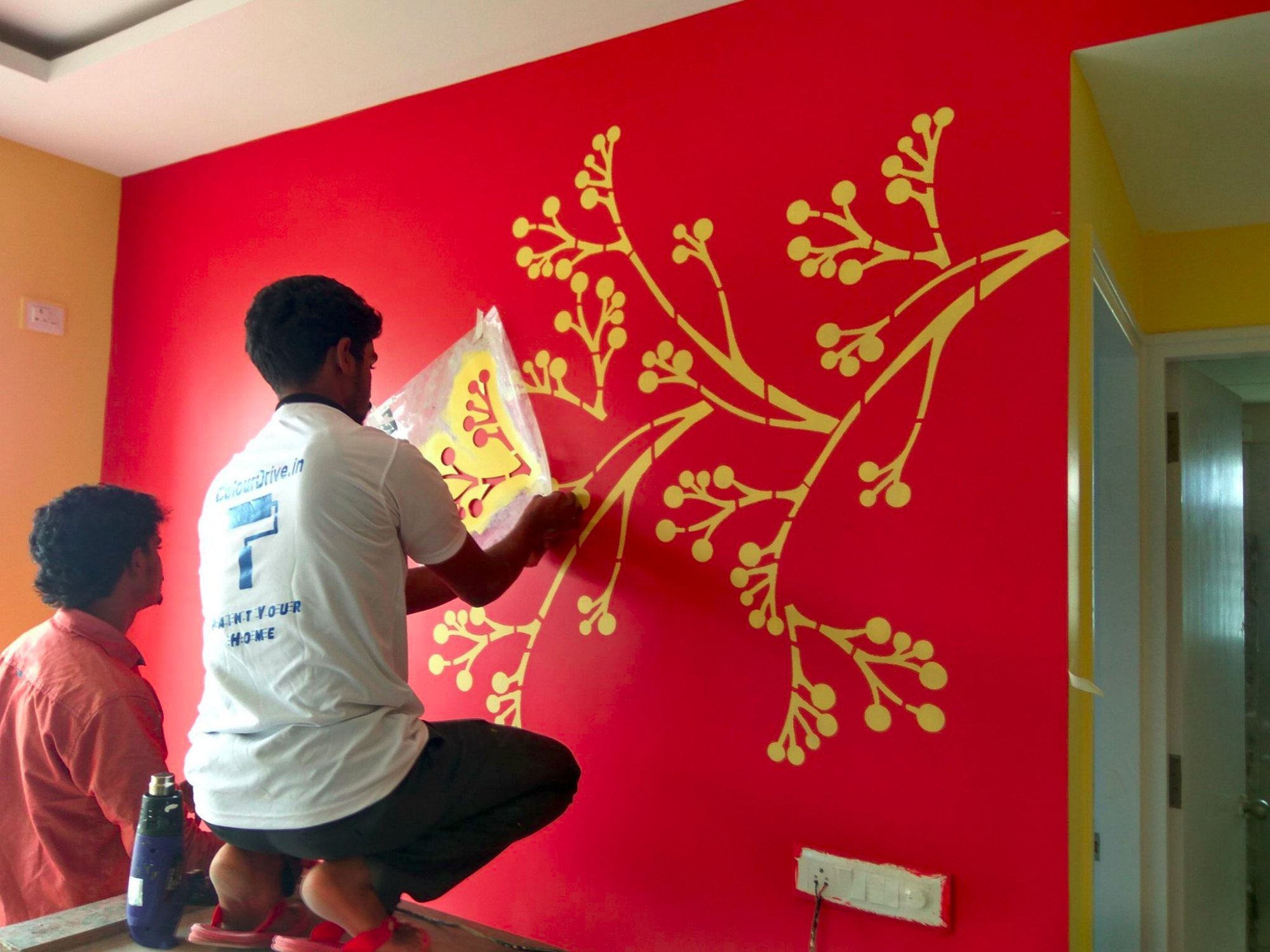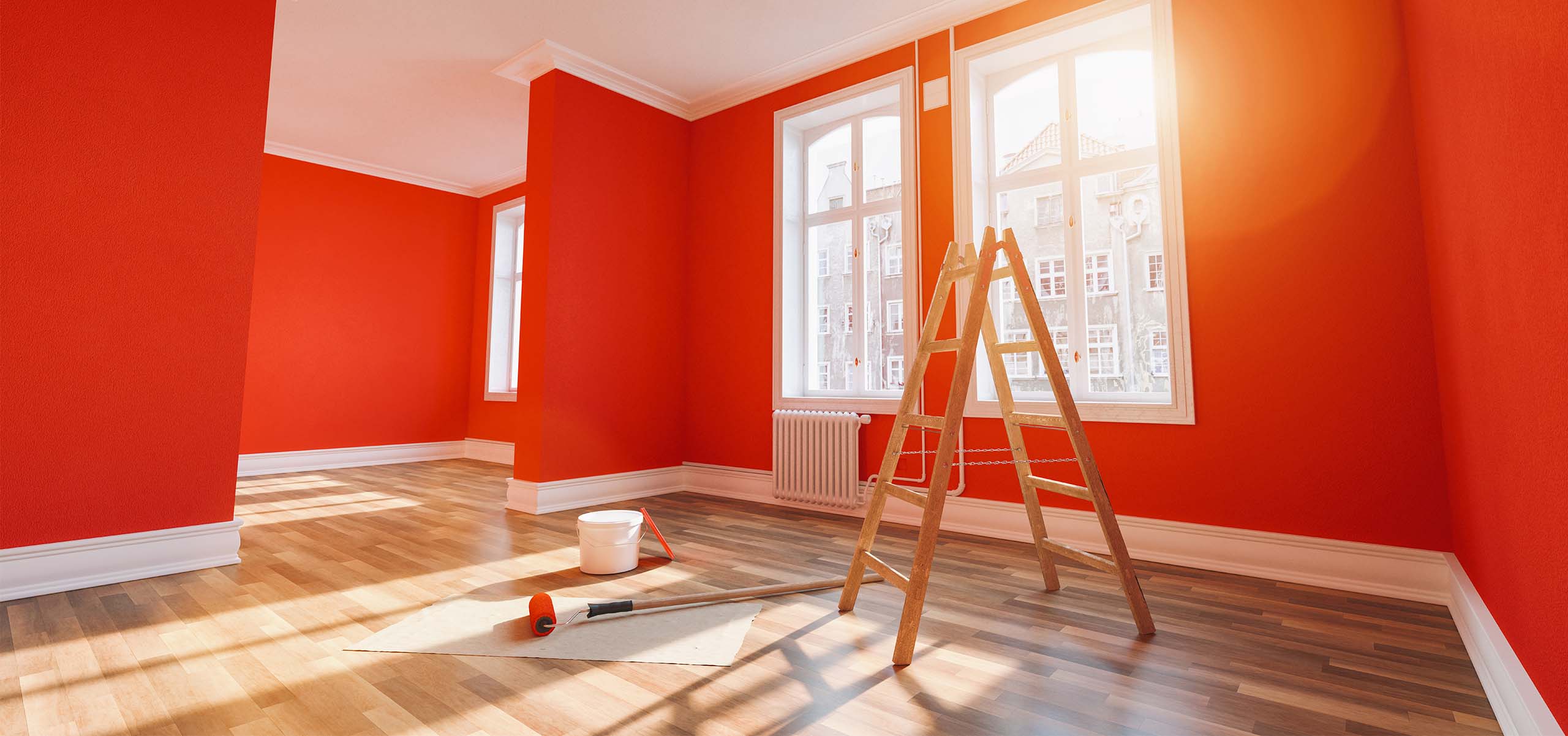Enhance Your Interior Decoration With Comprehensive Color Assessment
The integration of color appointment right into indoor design offers a distinct chance to improve and raise the psychological and aesthetic vibration of a room. By involving with a seasoned shade professional, you can navigate the complexities of shade selection, making certain that your options not only complement building functions yet additionally reverberate with individual style and psychological effect.
Benefits of Shade Appointment

Moreover, shade assessment help in making best use of natural light and optimizing spatial understanding. Lighter tones can make an area show up more extensive, while darker tones create an intimate setting. Cleveland Metro Painting Specialists. This critical application of shade can substantially influence the general atmosphere of any type of interior room
In addition, professional specialists possess a detailed understanding of ageless standards and present fads, making certain that the picked shades will continue to be enticing with time. This insight can conserve customers from pricey redesigns in the future. Color consultation encourages clients by providing them with a clear vision and instructions, fostering self-confidence in their layout choices and ultimately leading to an extra enjoyable and effective interior design end result.
Understanding Shade Psychology
The significance of shade psychology in interior design can not be overstated, as it dives into the emotional and psychological results that different hues can stimulate in individuals. Shades can affect state of mind, behavior, and also performance, making them a crucial factor to consider in any style task.
As an example, warm shades such as red, orange, and yellow are usually related to power and warmth. They can boost feelings of excitement and convenience, making them appropriate for social rooms like living cooking areas or rooms. Conversely, awesome colors like blue, eco-friendly, and purple tend to stimulate peace and peace, making them optimal for bedrooms or reflection areas.
Furthermore, making use of neutral tones can produce a well balanced atmosphere by enabling the bolder colors to stand out without frustrating the senses. Comprehending these mental impacts allows designers to develop rooms that not just look cosmetically pleasing but likewise promote emotional well-being.
Including shade psychology right into interior decoration includes a thoughtful option of colors customized to the desired function of each area, inevitably improving the total experience for its passengers. This awareness is important for accomplishing a harmonious and useful interior setting.
The Shade Wheel Explained
Comprehending the relationships in between shades is important for effective interior decoration, and the shade wheel functions as a valuable tool in this process. The color wheel, established by Isaac Newton in the 17th century, highlights the range of shades organized in a round format. It consists of primaries-- red, blue, and yellow-- that can not be developed by mixing various other colors. Second colors, developed by combining key shades, consist of environment-friendly, orange, and purple. Tertiary colors arise from blending a key and an additional shade, resulting in colors such as green and red-orange.
The color wheel aids developers comprehend the relationships in between shades, consisting of corresponding, comparable, and triadic plans. Corresponding shades, positioned contrary each other on the wheel, develop my site dynamic contrasts that can stimulate a space.
Utilizing the shade wheel in interior decoration not just improves visual allure official site however likewise evokes certain emotions and ambiences, making it a crucial referral for shade assessment. Comprehending these relationships ultimately equips designers to create areas that are both useful and aesthetically exciting.
Picking the Right Scheme
Frequently, picking the ideal combination is a definitive variable in attaining an effective interior decoration job. A well-chosen shade scheme can merge a room, improve its features, and evoke desired emotions. To start, think about the purpose of the space. Various rooms serve different functions and require palettes that reflect their designated usage; for example, peaceful shades such as soft blues or eco-friendlies work well in bed rooms, advertising leisure.
Following, consider the all-natural light offered. Light can considerably modify exactly how shades appear, so it is important to analyze the area at various times of the day. Additionally, think about existing architectural aspects and furnishings. An unified scheme must enhance these functions, creating a cohesive look throughout the space.
When picking colors, use the 60-30-10 policy, which suggests that 60% of the space ought to be a dominant shade, 30% a secondary shade, and 10% an accent color. This proportion makes certain equilibrium and visual interest (Cleveland Metro Painting Specialists). Lastly, example colors on the walls prior to committing, as this allows you to see exactly how the hues communicate with each other and the total setting they create in your interior decoration project.
Functioning With a Shade Professional

When dealing with a shade specialist, the procedure generally starts with a preliminary assessment. During this meeting, you'll review your vision, preferences, and the existing elements in your space. The consultant will certainly assess your demands and might suggest particular shade combinations that align with your objectives.
After establishing an instructions, the specialist will supply samples and visual aids to help you imagine the suggested color design. This action is vital, as shades can show up in a different way under differing illumination conditions.
In addition, a color professional can lead you in picking complementary furnishings, artwork, and accessories to harmonize with your chosen scheme. By teaming up very closely, you can achieve a polished aesthetic that elevates your click this interiors and creates an inviting atmosphere. Inevitably, the knowledge of a color consultant can dramatically enhance the total influence of your style project.
Conclusion
In recap, thorough color consultation serves as a vital tool for improving interior layout. By leveraging expert knowledge of shade psychology and spatial characteristics, a customized shade scheme can be created to stimulate details emotions and create an unified atmosphere.
By involving with a skilled color expert, you can navigate the complexities of color choice, ensuring that your options not just enhance architectural attributes yet also reverberate with personal design and mental impact. It comprises main shades-- red, blue, and yellow-- that can not be produced by blending various other colors.The shade wheel aids designers realize the relationships in between colors, consisting of corresponding, similar, and triadic systems.When picking colors, use the 60-30-10 rule, which recommends that 60% of the room ought to be a dominant shade, 30% a secondary color, and 10% an accent color. By leveraging expert understanding of color psychology and spatial dynamics, a tailored color scheme can be established to evoke details feelings and develop an unified environment.